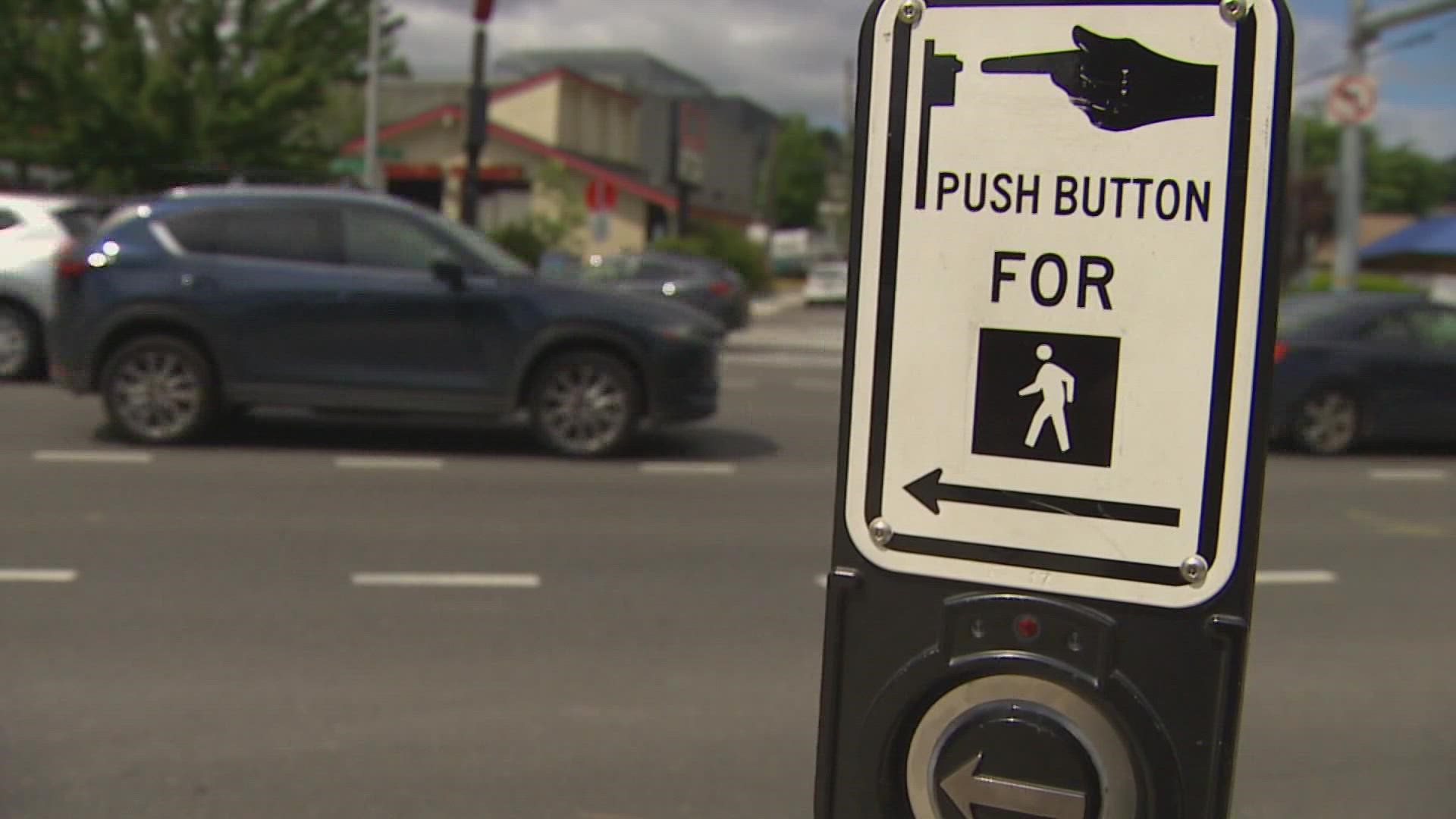SEATTLE — Seattle is working toward the goal of ending traffic deaths and serious injuries on city streets by 2030.
A report that will be presented at City Hall Tuesday found that traffic fatalities reached a 16-year high in 2021. The data also shows some disproportionate impacts.
In 2015, the city started the Vision Zero program as a citywide effort to eliminate serious injuries and fatalities from crashes. Over the last seven years, the data collected by the city shows people walking, rolling, and biking are involved in 7% of total crashes but represent 61% of fatalities.
“We're going the wrong direction. Crashes are going up instead of down, despite it being this concept for a long time,” said Anna Zivarts with Disability Rights Washington.
The Seattle Department of Transportation reports that since 2015, crashes seriously injured nearly 1,200 people and killed 175 people in the city. Who has been most affected by fatal crashes? According to SDOT, the average age is 52 years old, Black people are disproportionately impacted, and in 2021 people experiencing homelessness made up 27% of fatalities.
The data is particularly troubling in Zivarts' neighborhood, which is located in District 2.
In the last three years, nearly half of all fatal crashes have occurred in District 2 per SDOT's findings. The area includes notorious spots like Fourth Avenue and Holgate in SODO and further south, Rainier Avenue and 23rd.
"That's a horrible intersection, oh my gosh, that's the worst,” said Zivarts. "It's confusing. It's long. You know, Lighthouse for the Blind is right there.
"It's a frightening intersection with a lot of turning cars,” she added.
Zivarts is the director of the Disability Mobility Initiative at Disability Rights Washington, and she is in support of several changes, including lowering the speed limit along Rainier Avenue South.
"Many people with disabilities don't have access to driving, because we can't drive because of our disability,” she said, adding that it makes some people question if they should walk along corridors in the area known for having big crashes.
"I think it's connected to the history of the roads. The highway that went through here, right? Both MLK and Rainier used to be state highways and they're still high-speed roads with a lot of traffic,” Zivarts said.
The Vision Zero report is expected to be discussed during a Transportation and Public Utilities Committee hearing at 9:30 a.m. Tuesday morning at Seattle City Hall.

